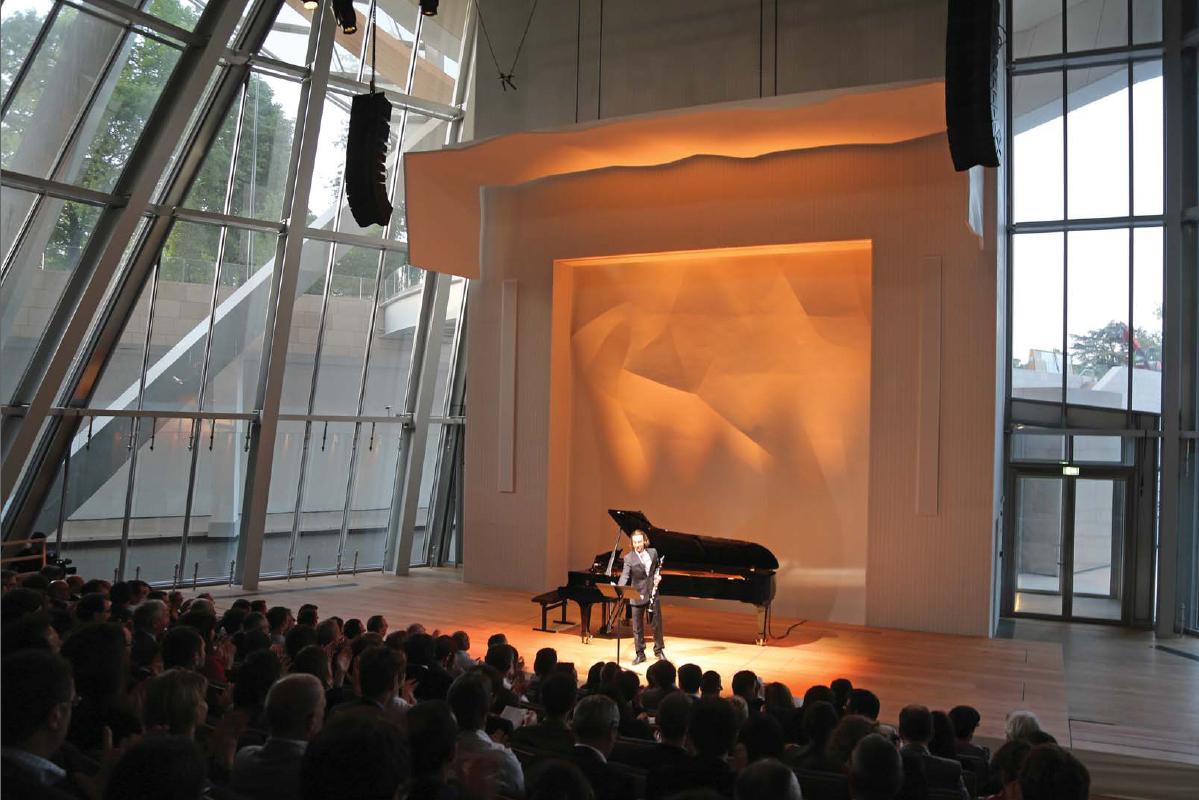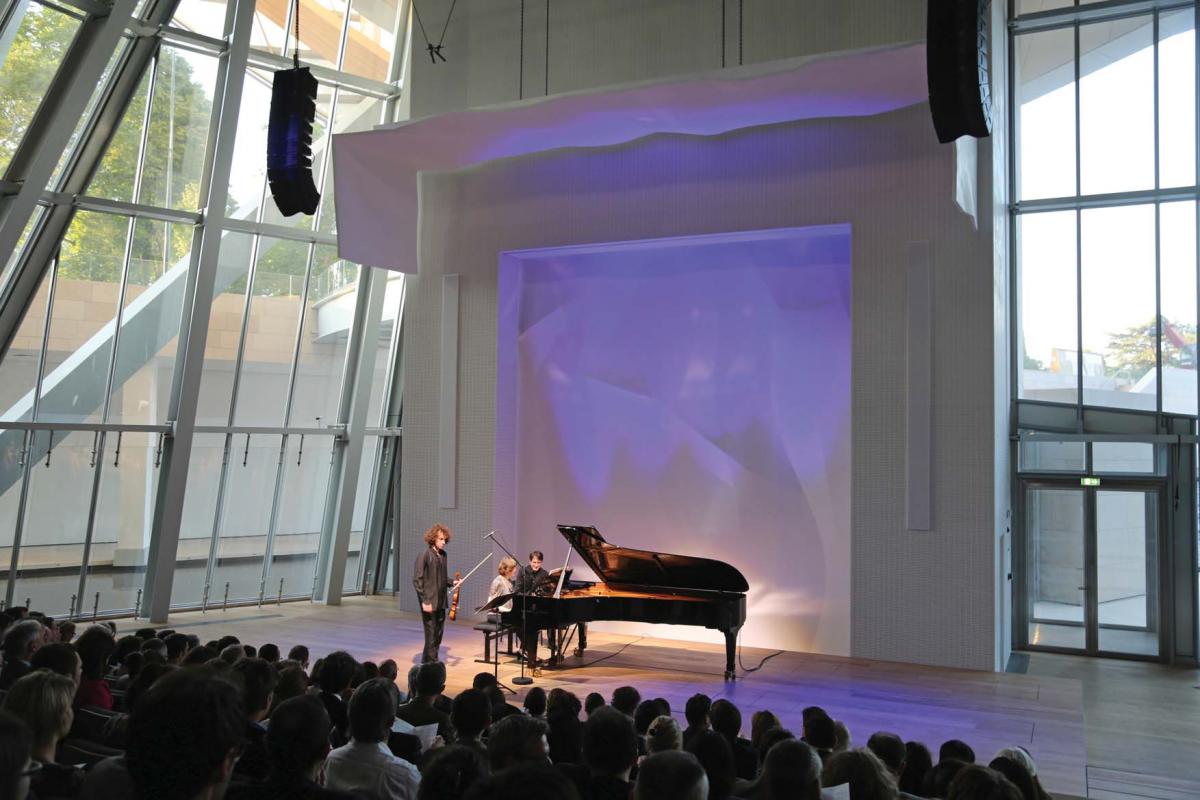Proscenium
Downstage acoustic reflector
Beyond its exhibition spaces, the Fondation Louis Vuitton also houses a 350 seat auditorium. Here, acoustic engineers Nagata Acoustics prescribed the installation of two acoustic reflectors, one to project sound towards the public, the other to enable musicians to judge the quality of their performance.
To this end, Frank Gehry proposed a proscenium, a 6m by 6m downstage reflector panel adorned with a horizontal banner-like acoustic shell, 2m in depth and spanning 8m. The client wanted both these elements to be mobile, implying issues of vibration and wear and tear. In order to reflect the sound correctly in all directions, the reflectors required a minimum mass of 30 kg/m² and had to comprise random facets. This was achieved by giving them a surface resembling crumpled fabric or paper. An M1 (‘permanently non-flammable) fire rating was required for the materials. Finally, the reflectors needed to be thin and compact, both to minimise their visual impact and to fit them into the narrow space allocated to set design.
T/E/S/S, in association with RFR, suggested producing the proscenium and the acoustic banner in an aluminium foundry as separate pieces, soldered together and covered in a special coating for a smooth finish. This technical solution enabled the production of pleated forms as envisaged by the architect. The surface is made up of pieces around 1.5m by 1m in size. Each piece is first poured in plaster on a polystyrene model whose form is produced using 3D digital modelling technology. The plaster positive is then used as a template to make a negative mould in sand of the final piece, into which can be poured the molten aluminium alloy. The mould is then discarded and the aluminium piece is cleaned before being soldered to its neighbouring pieces to form a continuous panel. The proscenium and acoustic banner are each made of three large panels of about 15m², which is the size limit to get the pieces into the auditorium. The two reflectors are assembled by welding on site, before being coated in an acrylic resin with a high content of white limestone.
For this project T/E/S/S, in a temporary joint-venture with RFR, were responsible for the technical design and shop drawings.




